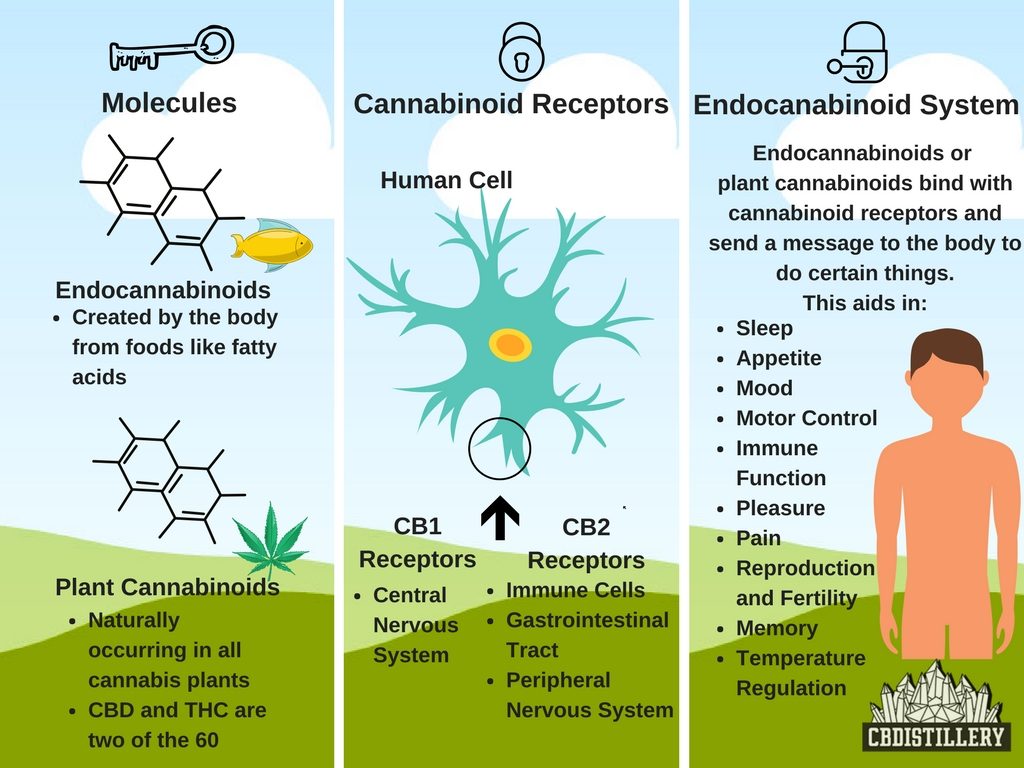How Does CBD work? page announcement
I’m making this blog post to let you know that I just added a page How Does CBD work?. Please click on the link to check it out. This is a work in progress. More pages to come in the upcoming days on this topic. For your convenience, a portion of that page is below.
CBD (cannabadiol) interacts with the body through the endocannabinoid system, also known as the endogenous cannabinoid system or the ECS. Scientific research in the late 1980s brought about an understanding of the endocannabinoid system. The endocannabinoid system regulates the body’s homeostasis, which maintains biochemical balance in every cell, moderating biological functions such as mood, sleep, appetite, hormone regulation, pain and immune response. As the environment changes, our bodies feel the effect, and our endocannabinoid systems mediate the cellular reactions to maintain healthy functioning of every cell.

Four primary functions of the endocannabinoid system have been identified as neuroprotection, stress recovery, immune balance and homeostatic regulation.
It is important to keep in mind that most every cell in our body produces CBD and many other cannabinoids. The endocannabinoid system occurs in all mammals. The endocannabinoid system in each cell acts throughout the body by neural communication with millions of cannabinoid receptor sites located primarily throughout the brain and central nervous system (CB1 receptors) and immune system and peripheral nervous system (CB2 receptors). Some cannabinoid receptors are concentrated heavily in the central nervous system, whereas other receptors are present in almost every organ of the body, including the skin, digestive tract, reproductive organs, etc.
Cannabinoids are biochemical agonists that bind specifically to cannabinoid receptors. Agonists are likened to keys and cannabinoid receptors to locks. The endocannabinoid system has a vast network of cell receptor proteins that perform numerous functions. Some claim that the endocannabinoid system is the greatest neurotransmitter system in the body. The endocannabinoid system participates in nearly every biological function, including mood, memory, motor control, immune function, pain perception, appetite, sleep, bone development, etc.
CBD suppresses the enzyme which breaks down anandamide. Anandamide, also known as arachidonylethanolamide, is a neurotransmitter produced in the brain that binds to the THC receptors, enhances CB1 activation and augments the body’s innate neuroprotective endocannabinoid response. Anandamide binds mostly to CB1 receptors concentrated in the brain and central nervous system. Because CBD suppresses the enzyme which breaks down anandamide, when there’s a higher concentration of CBD, the anandamide in that region persists for a longer time before getting broken down. During that longer lifespan, the anandamide can produce its beneficial effects for a longer time than when CBD is less abundant.
CBD stimulates the release of 2-Arachidonoylglycerol, also known as 2-AG. 2-AG is an endocannabinoid which activates both CB1 and CB2 receptors.